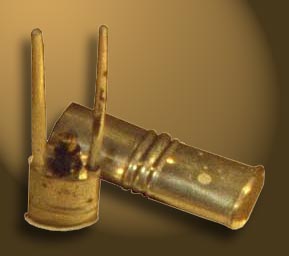From our perspective, none of their tons of supplies, not even the guns, powder, and bullets with which they fed themselves, were ultimately as important as the pens, ink, and paper they carried, and protected from the elements. Although the lists of stores purchased in Philadelphia show only a few “papers” of powdered ink; the captains must have bought more, perhaps in St. Louis.
It is one of those curious little paradoxes of history that so little is known of the story of ink because so little has been written about it. Ink of some sort was invented around 2500 BC, consisting of a pigment or dye, sometimes the carbon residue from oil-burning lamps, which was dissolved or dispersed in a liquid glue or gum, molded into sticks, and allowed to dry. The process of grating a stick and mixing the powder with just the right amount of water was the critical step. Temperature, of course, had a lot to do with the flow of ink, and not just in wintertime. The morning of 21 August 1805, signaled the occurrence of the annual “August anomaly” in the temperate zone. It was so cold that Lewis complained, “the ink freizes in my pen.”
The barometers of that day were too big and fragile for the expedition to bother with, but the journalists’ inkwells provided anecdotal observations on humidity. The weather diary for 23 September 1804 contains Clark’s comment that he had been having to replenish his ink stand every day, “at least 9/10 of which must evaperate.”
Experience the Lewis and Clark Trail
The Lewis and Clark Trail Experience—our sister site at lewisandclark.travel—connects the world to people and places on the Lewis and Clark Trail.
Discover More
- The Lewis and Clark Expedition: Day by Day by Gary E. Moulton (University of Nebraska Press, 2018). The story in prose, 14 May 1804–23 September 1806.
- The Lewis and Clark Journals: An American Epic of Discovery (abridged) by Gary E. Moulton (University of Nebraska Press, 2003). Selected journal excerpts, 14 May 1804–23 September 1806.
- The Lewis and Clark Journals. by Gary E. Moulton (University of Nebraska Press, 1983–2001). The complete story in 13 volumes.


